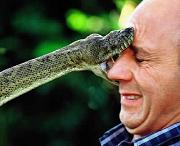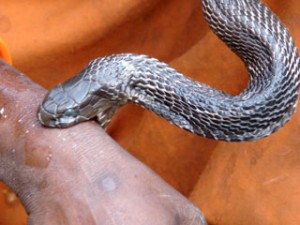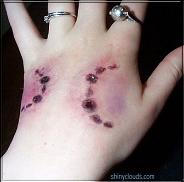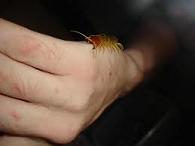First Aid for Rattlesnake Bite
posted by: Rio Dianne
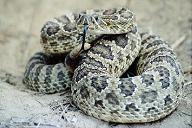 Do you still remember how Jimmy Kimmel staged up being bitten by a snake during his show before? Though that obviously may be pure prank, for sure being bitten by a snake, not to mention venomous snakes may really be frightening. Statistics says that atleast 7000-8000 individuals are bitten by venomous snakes in the US every year. Snakebites are said to cause tissue damage, excessive bleeding, and even deaths if not given proper treatment immediately. Most snakebite will pose the same local effects, however treatment may vary especially depending on the inhabiting reptile involved like if it’s caused by a western diamondback rattlesnake or copperhead snake. In today’s post, we’ll tell you how to apply first aid for rattlesnake bite. Read on to learn how to treat snake bites.
Do you still remember how Jimmy Kimmel staged up being bitten by a snake during his show before? Though that obviously may be pure prank, for sure being bitten by a snake, not to mention venomous snakes may really be frightening. Statistics says that atleast 7000-8000 individuals are bitten by venomous snakes in the US every year. Snakebites are said to cause tissue damage, excessive bleeding, and even deaths if not given proper treatment immediately. Most snakebite will pose the same local effects, however treatment may vary especially depending on the inhabiting reptile involved like if it’s caused by a western diamondback rattlesnake or copperhead snake. In today’s post, we’ll tell you how to apply first aid for rattlesnake bite. Read on to learn how to treat snake bites.
Rattlesnake Bite First Aid
Apparently, treatment for bites involves getting medical help as soon as possible. However, this incident usually occurs outdoors during hiking or camping which is why medical attention may not be the first option. Hence, first aid treatment by administered by the responder immediately.
While waiting for the medical assistance, wash the wound with water and soap. The wound are should be immobilized and kept lower than the heart level. Jewelries that may impede circulation as well as tight clothing should be removed from the patient, too.
Take note of the signs and symptoms such as severe pain and swelling in the bite area. If the wound has started swelling, check it every 15 minutes to tell you how the patient is severely bitten. Other symptoms such as vomiting may occur, so it’s better to give the sufferer frequent sips of water to stay hydrated. You should also watch out for shock. In cases of shock, CPR must be performed.
In most cases, severe symptoms for rattlesnake bite do not set it right away. This then gives you more time to get the patient to the hospital and be seen by a physician. Medical interventions for this case include antivenom injection especially when envenomation has happened. A little reminder though, contrary to the traditional home remedy of first aid for rattlesnake bite, extractor and other snakebite kits are not recommended anymore as they may aggravate the situation more.
Finally, prevention is still the best way to avoid this problem. Stay away from snakes and their habitat. As for this venomous reptile, this is more active during the spring season and can be commonly found in water, a shady place which is why they are expected to be in the bushes, and at places where there is food. Other preventive measures should be observed to totally eradicate the chance of being bitten by this. Take care!
You might also like
|
|
|
|
|

